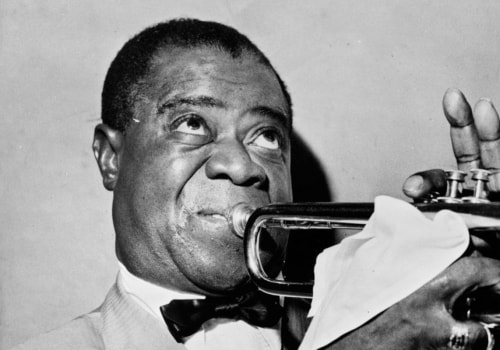The jazz era really began in the 1920s, when music became popular in the United States and Europe. The “Roaring Twenties” with prohibition, speakeasy bars, flappers and music brought jazz to the mainstream and made overnight success stories of black musicians like Louis Armstrong, Duke Ellington and Count Basie. The period from the end of World War I to the start of the Depression in 1929 is known as the Jazz Age. Jazz had become popular music in the United States, although older generations considered the music to be immoral and threatened cultural values.
Dances such as Charleston and Black Bottom were very popular during the period, and jazz bands typically consisted of seven to twelve musicians. Major New York orchestras were led by Fletcher Henderson, Paul Whiteman and Duke Ellington. Many New Orleans jazz musicians had moved to Chicago in the late 1910s in search of employment; among others, the New Orleans Rhythm Kings, King Oliver's Creole Jazz Band and Jelly Roll Morton recorded in the city. However, Chicago's importance as a center of jazz music began to decline towards the end of the 1920s in favor of New York.
New opportunities for live musicians in higher-paying clubs would encourage two types of jazz in the 1920s. From New Orleans, where Armstrong and Oliver originated, came a style in which musicians played together as an ensemble. In Chicago, an improvisative, free-form style emerged. Armstrong, who moved with Oliver to Chicago in 1922, enjoyed great success as a jazz artist, as did Smith, who recorded 180 songs during the decade.
Some of his jazz records openly referred to moonshine. One of Smith's songs, called “Me and My Gin”, included the chorus: “Any smuggler is a friend of mine. Armstrong recorded a popular song about the drink titled “Knockin' a Jug. Jazz recordings were often called racing records and were typically sold and played in the black neighborhoods of big cities such as New York and Chicago.
King Oliver brought together a mix of multiple styles, such as marches and ragtime, and mixed blues and pop songs from the 1920s. Oliver's big hit was called Dippermouth Blues, the band played the song every night at the request of the crowd. At the time, King Oliver was the most famous jazz musician in the world, but right behind him in The Creole Jazz Band was Louis Armstrong. Armstrong, known as Satchmo or Pops, is the basis of 1920s jazz.
He experimented with almost every musical style, including Hawaiian, gospel, bluegrass and popular music of the 1920s. An often overlooked character in 1920s music. Bix Beiderbecke has been described as a guy who, if he hadn't been born, would have had to be invented. Beiderbecke's music was the prelude and paved the way for great jazz musicians who became very popular in the 1940s and 1950s.
Although the guitarist was not the first European jazz artist and there were several high-quality ones (among them Grappelli, the Hawkins-inspired tenor by Alix Combelle and the alto player Andre Ekyan), Reinhardt was the first true jazz giant who was from outside the United States. Issues that revolve around race and class always prevailed during this time of segregation, when popular white musicians such as Paul Whiteman - bandleader and orchestral director of one of the most popular bands of the 1920s - were later criticized by traditional jazzmen saying it was a mockery of what was intended to be jazz—free and impressionable, not burdened by what listeners want. By the mid-decade, jazz musicians, whose skills were honed by playing improvised jazz collectively from the late 20s and early 20s, were more often reading bands, performing popular tunes of the day, and taking the occasional “hot solo”. Although jazz contains these subgenres from the early days of ragtime, Dixieland and swing to the influence of jazz on current hip hop, the common denominator between these subgenres is improvisation and the ability to show musical expression.
Based on recordings, jazz musicians in the 1920s could perform original material (and compositions aimed at jazz musicians), but recording company executives also wanted popular songs. Learn about the ways in which jazz evolved in each city and the influence of several local musicians in each jazz center. That culture advanced the careers of leading jazz performers such as Louis Armstrong, King Oliver, Duke Ellington, Fats Waller, Paul Whiteman, Bix Beiderbecke and jazz itself as an art form. English musicians' unions would largely close the door on American and foreign jazz musicians by 1935, but jazz artists continued to visit Europe until the start of World War II, including Coleman Hawkins, Benny Carter and trumpeter Bill Coleman, all of whom had long stays in the foreigner.
They were the great classical jazz singers of the 1920s, Mamie Smith, Ida Cox, Ma Rainey and Bessie Smith, whose vocal style inspired future jazz greats and singers such as Billie Holiday and Nina Simone. Scott Fitzgerald, author of the 1925 novel The Great Gatsby, hailed as “the age of jazz” began when jazz was already the pop music of its time, especially among members of the younger generation in the 1920s. Johnson) originated on the East Coast and flourished in New York in the 1920s and 1930s; New York's receptivity then drove innovations in modern jazz (or bebop) in the 1940s and avant-garde (or free) jazz in the 1950s and 1960s. While jazz music predated Prohibition, the new federal law restricting liquor advanced the future of jazz by creating a nationwide underground disco culture in the 1920s.
Connect to the elaborate archives of the Red Hot Jazz website, the Chicago Jazz Institute, and more. . .



